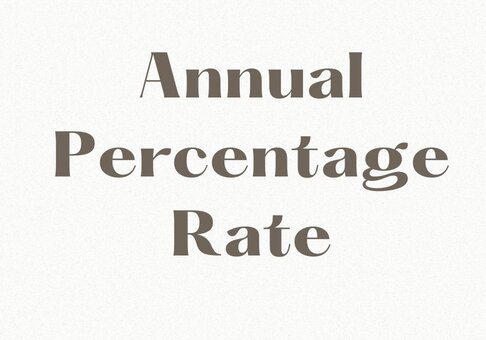If you’ve ever taken out a loan, signed up for a credit card, or considered financing a car, you’ve probably come across the term Annual Percentage Rate (APR). At its core, APR is a way to understand the cost of borrowing money or the return on an investment in terms everyone can easily compare.

Key Takeaways
- APR helps you compare loans and credit options fairly by including all costs.
- A lower APR means borrowing is cheaper, while a higher APR makes borrowing more expensive.
- Always ask for the APR when considering any loan, credit card, or investment.
APR Explained
APR is the total cost of borrowing money over a year. It’s expressed as a percentage and includes not just the interest rate but also additional costs like fees. This makes APR a more comprehensive measure of what you’ll actually pay or earn compared to just the interest rate.
Think of it this way:
If the interest rate is the base price of a pizza,
APR is the total cost of the pizza, including delivery fees and taxes.
Why Does APR Matter?
Imagine you’re comparing two loans:
Loan from Unlimited Financials has an interest rate of 5% but charges a 1% fee for administrative costs.
Loan from Connect Bank has an interest rate of 5% with no additional fees.
At first glance, both loans seem the same because they have the same interest rate. But loan Unlimited Financials has an APR of 6% because of the extra fees, while Loan from Connect Bank’s APR remains 5%. The APR gives you the full picture of the cost, helping you make smarter financial decisions.
How Does APR Work? A Simple Example
Let’s say you borrow ₦1,000,000 to start a small business. Here’s what happens:
Loan Terms:
Interest rate: 10% per year
Additional fees: ₦20,000
Interest Cost for One Year:
10% of ₦1,000,000 = ₦100,000
Total Cost of Borrowing:
Interest (₦100,000) + Fees (₦20,000) = ₦120,000
APR Calculation:
Total cost (₦120,000) ÷ Loan amount (₦1,000,000) × 100 = 12% APR
Even though the interest rate is 10%, the APR is higher at 12% because it includes the extra fees. This shows how APR can uncover hidden costs that aren’t immediately visible in the interest rate.
APR for Credit Cards
Credit cards use APR to show the cost of borrowing if you don’t pay off your balance in full. For example:
If a credit card has an APR of 25% and you carry a balance of ₦50,000 for a year without paying it off, you’ll pay:
25% of ₦50,000 = ₦12,500 in interest.
Fixed APR vs. Variable APR
Fixed APR stays the same throughout the loan term.
Variable APR can change based on market conditions, like a fluctuating interest rate.
What APR Doesn’t Include
While APR is useful, it doesn’t cover all potential costs. For example:
Late payment fees
Early repayment penalties
Non-mandatory insurance costs
Always read the fine print of any financial agreement.
By understanding APR, you can make more informed financial decisions, whether you’re borrowing money or evaluating an investment opportunity. If you have questions about specific products, consult your bank or financial advisor—they’re there to help!


